The Tent Stitch: When, Where, and Why
Written by: Peggy Bond
The Tent Stitch, is the basic diagonal stitch which is the most recognized of needlepoint stitches, and can be stitched in three variations: The Basketweave, the Continental and the Half-Cross. There are pros and cons and a time and place for each of these stitches.
Tent Stitch
The Basketweave Stitch is stitched on the diagonal as diagramed (see Figure 2) and creates a solid pattern on the back of the canvas (see Figure 1). This is the stitch of choice for chair seats, upholstery items or any piece that will receive wear and tear. It is durable and flexible and the finished piece does not warp as much as those done in the Half-Cross or Continental Stitches. It is truly a background stitch to be done around designs. I didn’t use it anywhere on the yarmulkes I made, but I did use it for the purple border of my Pansy Quilt Rug.
View of the Basketweave Stitch back side (Figure 1) and Basketweave Stitch diagram (Figure 2)
The Continental Stitch is also a good backing stitch. It lacks the durability of the Basketweave Stitch but can be worked in small areas, while providing a solid backing (as shown in Figure 3). My hat bands are usually done entirely in Continental Stitches. The No Tears Pillow was also done entirely in Continental Stitch. This is a good example of when you would not want to use the Basketweave Stitch for the background as it would have made the canvas much heavier than the fabric.
View of the Continental Stitch back side (Figure 3) and stitching diagram
The Half-Cross Stitch provides no backing and is not recommended for backgrounds. It does not cover the canvas well and should only be used on printed canvases where the thread color matches the color of the print. It does, however, use less thread than the Basketweave and Continental stitches. I have used it as the final row around a headband which is going to be turned under when I sew on the backing fabric.
View of the Half-Cross stitch back side and stitching diagram
One thing to bear in mind with the Tent Stitch, and indeed all stitching, is that thread and canvas need to match. Too fine a thread will not cover adequately, and too heavy a thread will be difficult with which to work and will usually create uneven stitches. Below is a chart matching the threads
(6-strand DMC Cotton Floss and 3-strand Waverly Wool) and the canvases that NeedlePaint offers.
| Canvas Mesh | DMC Cotton Floss | Wavely Wool | Notes |
| 10 | Not Recommended | 3 Strands | |
| 12 | Not Recommended | 3 Strands | For rugs and heavy use items |
| 2 Strands | For lighter-weight projects: soft pillows, purses | ||
| 14 | 6 Strands | 2 Strands | |
| 1 Strand | Use only on printed canvas where thread matches color | ||
| 18 | 6 Strands | 1 Strand | Great to use for belts, wallets, flasks |
Now having explained the how, when, where, and why of the Tent Stitch, I have to admit that I use it sparingly.
Coming soon My Favorite Background Stitches!
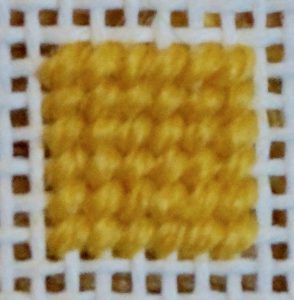
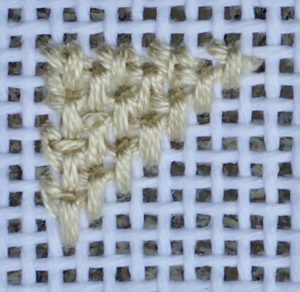
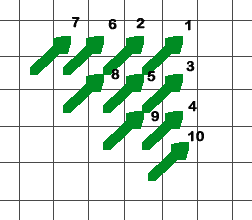
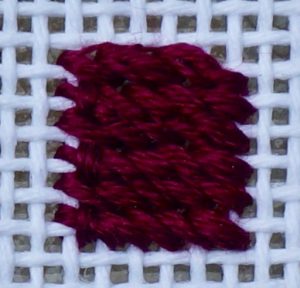
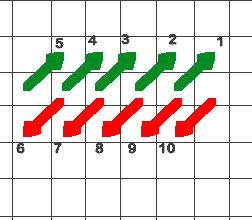
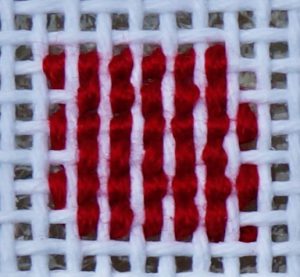
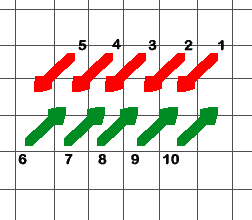


Recent Comments